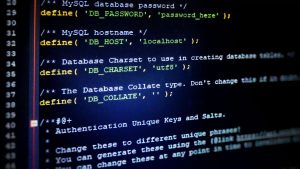Understanding BSD Bootloaders and Their Role in System Startup
A computer’s ability to transition from powered off to a fully functional operating system depends on a crucial piece of software—the bootloader. In BSD systems, the bootloader is responsible for initializing hardware, selecting the correct kernel, and handing control over to the operating system. Without a properly configured bootloader, a system cannot start correctly, making it an essential component of BSD-based operating environments.
BSD systems, including FreeBSD, OpenBSD, and NetBSD, each utilize their own bootloader designs. While their core function remains the same, differences in configuration, supported hardware, and security features set them apart. Understanding how these bootloaders work and how they can be customized allows users to improve startup efficiency, troubleshoot boot issues, and secure the boot process.
This article provides an in-depth look at BSD bootloaders, breaking down their architecture, operational stages, and configuration methods. Whether setting up a new BSD system or modifying an existing one, knowing how the bootloader functions will help users maintain system stability and reliability.
The Role of a Bootloader in BSD Systems
A bootloader serves as the bridge between the system firmware and the operating system kernel. When a BSD-based system is powered on, the bootloader is one of the first software components to execute. Its job is to locate the kernel on disk, load it into memory, and pass execution control to the operating system.
In addition to its core function, the bootloader allows users to modify boot parameters, select alternate kernels, and access recovery tools. For instance, users may specify single-user mode for troubleshooting or configure custom boot options to optimize system performance. Advanced configurations can include encrypted disks or network boot setups, further extending the bootloader’s functionality.
Each BSD variant ships with its own default bootloader, but users can replace or customize it based on their specific needs. Knowing how to interact with and modify these bootloaders gives administrators greater control over system behavior from the earliest stages of startup.
Common BSD Bootloaders and Their Differences
Each BSD operating system has a unique bootloader that caters to its specific architecture and design philosophy. While they share similarities, their implementations and feature sets differ.
FreeBSD relies on a multi-stage bootloader, starting with a minimal boot block that loads more advanced components, leading up to the kernel. Users can interact with the bootloader through the loader(8) interface, which provides a shell for modifying boot parameters.
OpenBSD uses a simpler bootloader that prioritizes security and reliability. It supports features like kernel verification and secure boot settings to protect against unauthorized modifications. The OpenBSD bootloader offers minimal configuration options compared to FreeBSD but is designed with strong security practices in mind.
NetBSD’s bootloader provides extensive platform compatibility, allowing it to support a wide range of hardware architectures. This flexibility makes NetBSD a preferred choice for embedded systems and legacy hardware. The bootloader is designed to be modular, enabling users to customize it for different use cases.
While each bootloader operates under a similar principle, their configurations and commands vary. Understanding these differences ensures users can troubleshoot issues and make informed choices when modifying boot settings.
Understanding the BSD Boot Process
The BSD boot process consists of several key stages, each playing a critical role in preparing the system for use. While exact steps may vary by operating system, the general process follows a similar structure.
The first stage of the bootloader resides in the system’s Master Boot Record (MBR) or GUID Partition Table (GPT). This minimal program is responsible for locating and loading the second stage of the boot process, which contains additional functionality for kernel selection and configuration.
During the second stage, the bootloader loads essential system components, including the kernel and any required drivers. At this point, users can interact with the bootloader to modify startup parameters or choose an alternate kernel. Once configuration is complete, the bootloader hands control to the BSD kernel.
After the kernel takes over, it initializes hardware, mounts file systems, and launches the init system, which in turn starts essential services and user applications. By understanding these stages, users can troubleshoot boot issues and optimize their system for faster startup times.
Configuring Bootloader Parameters for Custom Setups
BSD bootloaders provide various configuration options that allow users to tailor the boot process to their needs. These configurations may involve modifying boot menu options, setting kernel parameters, or adjusting system behavior before the kernel loads.
For FreeBSD users, boot settings can be configured through the /boot/loader.conf file. This file allows users to enable specific kernel modules, change system limits, and modify boot-time behaviors. Users can also access the loader(8) interactive shell to make temporary changes before booting.
OpenBSD users can adjust boot parameters through the boot.conf file. While OpenBSD’s bootloader offers fewer customization options than FreeBSD, it allows users to set default kernel boot options and define custom boot behaviors.
NetBSD users can configure boot settings through the /boot.cfg file, which provides extensive options for system startup. NetBSD’s modular bootloader architecture enables it to support different configurations across multiple hardware platforms.
By adjusting bootloader parameters, users can optimize performance, enable debugging tools, and ensure their system boots with the desired settings.
Troubleshooting Common Bootloader Issues
While BSD bootloaders are designed to be reliable, issues can arise due to misconfigurations, hardware failures, or corrupted system files. Recognizing common boot problems and knowing how to resolve them can help prevent downtime.
One frequent issue is a failure to locate the kernel, which may result from a missing or misconfigured bootloader entry. Users can resolve this by manually specifying the correct kernel path during boot or restoring default bootloader settings.
Boot loops and crashes may occur if kernel parameters are set incorrectly. Resetting boot options to default values or using recovery mode can help diagnose and fix these errors.
Corrupted bootloader files can prevent the system from starting. In such cases, users may need to reinstall the bootloader using BSD installation media or a live rescue environment.
Having a solid understanding of BSD bootloaders enables users to identify and fix these issues, ensuring system stability.
The Role of Secure Boot in BSD Systems
Security is a growing concern in system boot processes, and BSD operating systems provide various protections to prevent unauthorized modifications. Secure boot mechanisms ensure that only trusted software is executed during startup, preventing malicious code from compromising the system.
FreeBSD allows users to implement secure boot by enabling verified kernel signatures and ensuring that only authorized binaries are executed. This adds an additional layer of security against unauthorized system modifications.
OpenBSD takes a security-focused approach by restricting bootloader interactions and verifying kernel integrity. These measures prevent attackers from tampering with boot configurations or loading untrusted code.
NetBSD supports secure boot features through its modular design, allowing users to implement custom security measures based on their needs. This flexibility makes it a strong choice for environments where security is a top priority.
By configuring secure boot settings, BSD users can safeguard their systems from boot-level threats and maintain system integrity.
Optimizing the Boot Process for Faster Startups
For users seeking to improve startup times, optimizing the bootloader can yield noticeable performance gains. Simple adjustments can significantly reduce boot delays and improve system responsiveness.
Reducing unnecessary bootloader wait times is one approach. Adjusting timeout settings in boot configuration files ensures the system starts quickly without waiting for user input. Disabling unneeded kernel modules can also help reduce startup times by minimizing resource usage.
Preloading essential drivers and services can improve boot performance. By identifying frequently used components and ensuring they load efficiently, users can create a more responsive system.
By fine-tuning bootloader settings and removing bottlenecks, BSD users can achieve faster and more efficient system startups.
A Stronger Understanding of BSD Bootloaders
Bootloaders are a critical part of any BSD operating system, responsible for loading the kernel and preparing the system for use. By understanding how BSD bootloaders function, users can troubleshoot startup issues, configure boot parameters, and optimize their system’s performance.
Whether using FreeBSD, OpenBSD, or NetBSD, having a firm grasp of the boot process allows for better system control and reliability. Configuring boot settings properly, addressing potential boot failures, and implementing security measures all contribute to a more stable computing environment.
With this knowledge, BSD users can confidently manage their boot configurations, ensuring their systems run efficiently and securely from the very first moment they power on.










No Responses